Podcast: Download (Duration: 30:57 — 28.5MB)
Get Notified Of Future Episodes Apple Podcasts | Spotify | Amazon Music | Android | Blubrry | Gaana | TuneIn | Deezer | Anghami | RSS | More
In the podcast:
01:50 – A very important topic
05:56 – Challenge marketing and what’s involved
07:26 – The importance of control
10:19 – Some challenge components
11:39 – Structuring a challenge
12:52 – Everything on one platform
14:10 – On to segmentation
15:35 – The story behind KLEQ
18:00 – Not just any automated webinar
18:46 – Boosting with quizzes
21:26 – The system in action
24:24 – Not worrying about the sale
27:02 – The simplest way to make it work
Power up your marketing and your business with help from James
Transcription:
James: James Schramko here. Welcome back to SuperFastBusiness.com. This is Episode 644. It’s about quiz funnel software for memberships, so of course, being part of The Membership Series, I’ve brought my membership buddy John Lint from KLEQ.com. Welcome, mate.
John: Hello, hello. How are you?
James: Very good. We’re having some tremendous feedback on our previous episodes of this series, which are well worth a listen. We’ve talked about all sorts of membership-related things, from validation to retention to attraction to behind the scenes, how to support the membership, courses, even technical aspects, so it’s more or less a masterclass of membership stuff.
And we’re viewing it through your lens and my lens, and that is, your lens is through the eyes of an in-the-trenches direct response marketing / techno phenom. You somehow understand marketing and technology, and you’ve built the perfect solution for people who want to have a course, for people who want to have a membership. And I’m looking at it through the lens of someone who’s been running my own membership for 10 years at SuperFastBusiness, nine years at SilverCircle.com. And I’ve been coaching many, many membership owners, everything from bass guitar right through to women’s Christian groups, so a diverse tapestry of clientele.
A very important topic
Between the two of us, we’ve seen and tried most things. And today, I want to get your particular expertise around a topic that has become pretty important lately, in fact, so important that I spent years of work with one of the guys out in the marketplace, Ryan Levesque. Pretty much every market has now heard of Ryan Levesque. I was coaching him for a number of years from the $1 million up to $10 million a year with his whole methodology, which is around ASK, and segmentation, and surveying. And that’s one aspect of it.
And the other side of it is, I’ve decided to have this topic spoken about at SuperFastBusiness Live, our annual event in Sydney here, and that is challenge marketing. A lot of my high-level students have been using challenges effectively. And it’s a great strategy. And if you combine those two things, if you can combine challenges with great segmentation, you get a nice approach that you can go to the market with that gets people active, that gets people results, which is always a fantastic thing. And it usually leads to sales on what we call the back end, but the next sale along can easily flow if you’ve helped someone get a result before they even pay you or if they in fact pay you a small amount, which some of my clients have been doing.
I think Dean Jackson was one of the first people that I heard from, where he talks about getting people a result before they pay you, not dissimilar to what was going on in the Mercedes car dealership. When someone takes a test drive of an AMG C63, they’re going to want one. I actually took a test drive today of an e-mountain bike, John. I’d never ridden one before. I’ve had four mountain bikes in the past. I gave up on my last one when I started surfing about five or six years ago. I lost interest in it, it was just a bit too much effort. You have to put it in the car, go to the place, and be a little bit uncomfortable. But today, I rode an e-mountain bike, and what a difference! This thing just flies up hills. You can go a lot further. You don’t even have to put it in the car, because you just ride to the place where you want to ride. Friends of mine commute into the city with them, just a whip down to the shops and back, or to take it on trail. It’s going to revolutionize the way that people commute. I could see us ditching the Vespas and going electric.
John: We need to get one of those surf racks to go on the side.
“A challenge is a nice way to have a test drive.”
James: Absolutely. I’ve seen pictures in America when they go to places like Trestles. You see them with e-mountain bikes and then just a surfboard under the arm. So the test drive is a good thing. And I think a challenge is a nice way to have a test drive.
Now, we’ve had a few episodes on this particular podcast about challenge marketing. We were only just hearing about it not that long ago from Angela Henderson, who has been following some other people as well and being able to incorporate and to improve them. She’ll be speaking about it at SuperFastBusiness Live. Of course, way back, we heard from Zach Spuckler, and his episode was really good if you want to get the methodology behind it and the deep understanding of why you do a challenge and what sort of challenges you can do and how long they can be and what sort of results to expect. That’s a great starting point.
The real point of our discussion today is like, okay, you want to do a challenge, but technically, what’s involved? I know some people have been using a basic opt-in form and Facebook groups. But I think it’s got to be smarter than that. There has to be a way that you can do challenges without having to sort of bootstrap it up with little bits and pieces. What do you think about that?
John: Yeah. I mean, you know where I stand when it comes to building assets.
James: I know you’re big on Facebook.
John: Haha. Yeah.
James: By the way, that episode was number 589. If you want to find out how to use challenge marketing, then 589 is great. Technically, what are you doing with the platform that makes it special or different than the way everyone’s been doing it before? And why do you think marketers who use challenges have started to really get attracted to your platform? What has it been offering that others don’t?
Challenge marketing and what’s involved
John: Yeah, I mean, there’s a lot of members who are doing that strategy, just like you said, you know, the challenge marketing. And just as a quick recap, a challenge is basically you are building your list by offering, let’s say, a challenge, a crash course, some kind of training program, and it would involve some kind of coaching from you. And the goal is to deliver a specific result at the end of the challenge. That’s why it’s called a challenge, because we challenge you to get to do this, right? So, challenge you to create your first online course, or challenge you to create your first social media page or whatever it is, right? So that’s why it’s called a challenge, and that’s the goal.
“You want to create something that you can reuse in the future, something that you control.”
So yeah, there are a ton of different tech pieces involved – you need to obviously build some kind of mini funnel to capture that traffic so that they can register for the challenge, and then you need to deliver that challenge. So this is going to be a series of pages with content. And then what some people do, they take a little shortcut and they think hey, all right, let’s do it on Facebook, and let’s create a Facebook group. Now the problem with that, like we talked about it in the other episodes, you know, you want to always be building assets. So whatever you do, you want to create something that you can reuse in the future, something that you control. It’s all about owning the racetrack, right?
James: You keep saying racetrack and I say racecourse.
John: Yeah.
James: One of my members sent me a funny joke about that. But I think Americans use that phrase, so I’m not surprised. It means the same thing, right? Control.
John: Yeah, it means the same thing and yes I lived in America for a few years.
James: We’re a multinational outfit here, so don’t worry about it.
The importance of control
John: Bottom line, you want to be in control, okay? It’s very important, because who knows what will happen? We already know that Facebook kind of killed Facebook pages when everybody was a building their Facebook page and their followers, and one day they decided, you know what? Your posts are not going to reach everybody who’s following you and liking your page. You need to pay for that. Well, it seems like apparently they’re going to be doing that to groups, and then what will happen to your group if they start doing that? That would suck, right? So that’s not great.
James: Well, it’s also happening to them, too, it’s worth pointing out. I mean, Facebook just got slammed by the UK. They’re digital gangsters, is what the news was saying.
John: Absolutely.
James: The CNN was reporting that Facebook intentionally and knowingly violated data privacy laws. I mean, that does concern me as a business owner. If I’m going to be building my platform, I don’t really think I want it on there. And for that reason, recently a client of mine wanted to run a challenge, and instead of setting up a Facebook group, we said, how about you set them up in the membership? Just put a separate section of your membership, just for your challenge, and after you’ve run it, then you can put it to evergreen. Like, pick the best parts of it, prune it, tune it, edit it up, make it great, and then you can run this thing forever using some of the tools that are available now. You can have automated deadline funnels, you can have paid traffic going to an autoresponder sequence. Even the most basic autoresponder sequence, back to your own asset, over and over again, can be set up.
These days, even if you have a video on a page and an autoresponder, that is one level of automation or semi-automation that you can feed into that is away from large multinational organizations who, you know, it sounds like it’s been alleged that they’re flouting the law. And you’d have to wonder, will there be a catastrophic ending to all of this? Will it turn into MySpace or something? I mean, even big companies like Google couldn’t get social media right. Buzz, Wave and Google Plus, which they’re just shutting down now, it’s just shut down. It’s gone. Imagine if you built – in fact, I know someone I coached for a few years had their entire membership on Google Plus.
John: Yeah, for sure.
James: Hundreds and hundreds and hundreds of members. Where’s that today?
John: Yeah, and, you know, there’s many, many, many examples over the past five, seven years of social media platforms that just were gone, or things that were just gone, you know? I remember, I think, what was that video platform? I think it was Vive or something like that.
James: Oh yeah, Hive?
John: Yeah, something like this, right? Well, I remember watching some documentary about those guys building, you know, their content on the platform. And they were like, you know, getting so many subscribers. And then, from one day to the next, gone. The company folded, they’re gone. This network’s now gone. And while they were doing that, they were not building their own assets. They were not doing what we talked about in the previous episode – capturing your traffic, building your own audience and doing all these things so it’s in your terms, in your environment. Maybe, yeah, you’re leveraging social media, that’s great. But you always want to capture. We already talked about this many times.
Some challenge components
So let’s get back to the challenge thing. So yeah, there are many multiple things. And like you said, you know, you need to be able to have your own environment. Because at the end of the day, when it comes to the challenge, you have few components, right? You want to have a community, it’s a big part of it. Big part of building that community, and you do that by providing great content every single day as part of your challenge. So every day, you release a piece of content. And then you always want to have, obviously, those communications and that community going, all these comments.
And something that is kind of cool for you to do is maybe you want to do some live events, right? Every day, you’re live and you’re answering questions. All of that, it’s all about building authority, people get to know you, they get to like you. And all of that helps you because at the end of a challenge, of course, you want to sell something. You want to sell a membership, you want to sell an online course, a program, whatever it is.
So obviously, all of that will help you because at the end, the only thing you need to do is like, hey, guys, hope you’re enjoying the challenge, we got that big step done. Congratulations, you have accomplished that step. There are other steps now, let me guide you through the process. Let me show you how to get them done. And we’re going to do exactly what we did with the challenge, but we’re going to do it inside our masterclass, or inside the membership site. And remember, you have access to this, this and that; you have ongoing coaching, all of that stuff. So you’re making that offer at the end.
Structuring a challenge
And when it comes to structure, so we need, obviously, a funnel to be able to build our list and allowing people to register for the challenge; there’s going to be usually a registration page, you know, where you have information. And when they enter their details, they can be added to your emailing system. When they do that, they’re going to reach a page that is usually a thank you page, where it’s maybe you on video, or just some simple text, telling them what happens next, how the challenge works. And then, of course, you want to have a system link that is going to allow them to get their login details to the challenge, right? So then they can log in to that private member’s area where the challenge will be delivered. And then in there, they can go through that special, let’s say, crash course, challenge, whatever. If it’s a course, imagine a course where every single day you can deliver a page. And in that page, like I said, some texts, video view, maybe the lesson of the day. And then at the end, you can have comments.
So that’s kind of like the basic framework. The good thing with that is that it’s not like using a Facebook group where you have links there, and because you can’t really structure things, right? You can’t really build the course any way you want. You have to follow the weird type of layout. So I mean, yeah, it works. But you’re not building something that you can then reuse, and like you said, very important, that you can then later put on evergreen, that you can on autopilot.
Everything on one platform
So by using your own type of solution, and of course, with KLEQ.com, we give you everything I’m talking about. You can do it with KLEQ.com. One platform will allow you to do everything, everything that we just talked about. So yeah, you can create the pages, you can deliver the course, you can build what we call social wall pages. And social wall pages, it’s exactly, imagine, your own private Facebook group inside your course, inside your challenge course. And in that way, you can build that community. You can build those discussions. People can like each other’s comments, they can check out each other’s profile, they can connect with each other. They can do all of that cool stuff, but in a private area that you control 100 percent.
“Provide a ton of value to people, help them out. Even if they don’t buy at the end, that’s okay.”
And of course, you’re using that whole challenge period to provide a ton of value, like you said at the beginning. Provide a ton of value to people, help them out. Even if they don’t buy at the end, that’s okay. It’s almost like you don’t care. You shouldn’t focus on that, on the sale, while you’re delivering the challenge. It’s really about helping them out, getting that result. But you’re using a platform that quickly allows you to deliver content quicker, allows you to build a community, and allows you to then do the awesome stuff that you can do, like the tagging, the segmentation, like okay, well, did they complete the entire challenge? Well, if they did complete it, then I can tag them in my emailing system. And tagging, it just means labeling them.
So now we start talking about the segmentation stuff, right? We started to talk about quizzes and segmentation. Well, that’s one way of doing it. You can say, well, who finished a challenge? Who didn’t finish the challenge? Well, those seem to be more interested. Who watched X seconds of that video in the challenge page one? Well, okay, I can tag them. You can start doing some crazy stuff if you wanted to. But now you have a platform that allows you to do all of these things – deliver your content, but also gives you the control that you need. So you are always building your assets, and you’re always building your business. You’re not building Facebook business or Google’s business, you’re building your business. So all that time that you spend, it’s to make sure that you’re always growing your own business.
James: So technically, how does it work? The difference between running it one time, because you have to do your first challenge, and I imagined you’d be tempted to do that live?
John: Yes.
James: But you could automate it.
John: Yeah.
James: And once you’ve done one live, and if you want to automate it, like what are the steps involved as the person making this product, using KLEQ.com, that might be different than having to set up web pages and Facebook groups with webmasters? And also, we want to talk about how you involve segmentation, because there are a few tools out there in the marketplace that are available, that will take people’s information and then segment them into various different buckets and places, you know, that’s the terminology they call.
John: Right.
James: Do you handle some of that so that you can have a more unique experience for that person, or relevant experience?
The story behind KLEQ
John: Yeah, absolutely. I mean, we’ve been working on this for a few years now, with some key people doing some really unbelievable segmentation and automation. I mean, that’s one of the reasons why we built KLEQ, because, you know, we had high-level clients who wanted really advanced funnels.
James: This is the funny thing, right? I don’t think many people know this. And I’ve been digging around and found out more about this, especially recently. As I’ve been getting referred, I actually stumbled across you through a back channel of a super high-level contact that I met overseas, who’s dealing with $10-million-plus businesses, had been doing some business with a partner. And I checked the partner, and the partner had been contracting the build of the funnel, and the partner had been contracting you to build these things. And then I realized, so that’s the genesis of this program. It was so that you could solve your own need and one of the world’s best funnel building experts. And now I guess it’s kind of like you’ve had to tone it down a bit to meet the general market.
But basically, the average consumer is probably not appreciating how damn clever this software is, or how intelligent it can be compared to the other tools on the market. It must actually frustrate you when they’re comparing, like, crappy versions of membership tools that don’t have like, even the same brain power in their pinky. And, you know, it’s like, they’re drinking fine wine, but they just think it’s like red cordial. You know?
John: Yeah, I mean, I’m so glad that you mentioned that because, yeah, that’s definitely one of my frustrations. That’s definitely one of my challenges as well. And yeah, you’re right. You know, we built KLEQ.com, because that’s what we were doing. We were building high-end campaigns. And, you know, when you’re building campaigns, you know that it takes time. And yeah, okay, sure, we have a team and they’re going to do the steps, but it takes time. So having a tech background and having a tech team on board, that’s why we decided, let’s create a platform that allows us to create all the funnels that we want, and allows us to do all the segmentation that we want, and allows us to dynamically deliver content based on who they are.
So yeah, because there’s two levels of segment, there’s two phases when it comes to segmentation. First, is to actually segment people, right? So you want to know, okay, what do they like? And then there’s the second phase of delivering the stuff that they like, right? So there’s actually multiple technologies being involved in all that. So we built KLEQ so we could do all this crazy stuff.
Not just any automated webinar
So if you’re thinking about, for example, an automated webinar, everybody kind of knows, okay, automated webinar. But what about an auto webinar that dynamically updates, meaning changes, adapts to the contacts profiles’ preferences, right? So if James goes to the page and the page knows that he likes stuff about you know, surfing, well, the webinar is going to talk about how if he buys that product, he can enjoy his surf time. Or if I like golf, well, the webinar is going to be a different version of the webinar. It’s going to talk about, oh, yeah, when you buy the product, you can enjoy your golf time, just to be the example, but just to show you that dynamically, you know, it can update.
So we have built a lot of those things inside KLEQ. And that’s what we call the audience booster, right? And on top of that, in front of that, before you can do that, you need to, obviously, segment.
Boosting with quizzes
So now we have another booster called the quizzes. A quiz is basically a series of questions. You’re asking questions. When people land on a page, they click a button and they can take a quiz. There are many, many strategies, we can maybe talk about the different strategies later. But bottom line, just to explain quiz, they start the quiz, a couple of questions. Maybe, you know, three, five, seven, depends how long you want your quiz to be. They answer those questions, and basically, that tells the system, your emailing system, and as well, KLEQ, that, okay, this person likes this. This other person likes that thing. Okay, so now we are going to be using and leveraging tags in your email system. See, this is the unique thing with KLEQ, by the way, just to highlight it, it works with any email system out there. You do not need to have something else. So if you’re using ActiveCampaign, Ontraport, ConvertKit, Infusionsoft, Aweber even, and soon MailChimp – whatever you use, you can do some crazy quiz, and then you can apply a tag based on all the answers that they picked throughout the quiz. So if your quiz has seven questions, then you can have seven different tags based on what they selected. Right?
You can also do that, this is a pro strategy, you can do that by applying a Facebook pixel to each question’s answer. So if one of the questions was, hey, what’s your biggest challenge? And let’s say it’s A, B, and C, well, the people who selected B, you can then start building a custom audience of everybody who selected B on Facebook. You can start building a custom audience of everybody who selected A. So now you can have dynamic ads going on right there. Okay, whoever picked A, I know that they like this; I know they are struggling with this. I have some ads there. This is a pro strategy. But bottom line, you’re building that quiz, they’re answering questions, they are now telling you what they like, you’re adding this information in your emailing system, super powerful. You’re, of course, adding that information into KLEQ, super powerful. And now at the end of the quiz, you’re obviously building your list, right? Usually the strategy when it comes to a quiz, they’re like, hey awesome, if you want the results to the quiz, or, do you want to know what’s going to be the best fit for you? You enter your name and email or just your email, and you get my customized report or a customized video training that will help you get more results, whatever it is.
James: There are people out there who sell this software for, like, $200 or $300 a month, that just does that. It doesn’t do any of the other stuff.
John: Exactly, exactly. So once you do that, great, you’re building your list. Awesome. You’re segmenting, you’re building those custom audiences out there on Facebook. Awesome. You’re doing all that stuff. But remember what I talked about. You can also save that information into the audience booster. So now your website also has all the information. And when I talk about your website, I’m talking, imagine, all your future funnels.
The system in action
So now this guy joins your list. He’s on your list. Let’s say you follow up and say, James, you were telling me that you like surfing. And well, that’s great, because now you can have dynamic emails, right? You can now send them emails – obviously the guy picked surf, let’s put him into the email sequence about surfing, right? Obviously, you’re not going to start talking about tennis, if he likes surfing. Great. So now all those emails are going there. And what you can do, let’s imagine you have the second question during your quiz that says, hey, what’s your level of surfing? Are you a pro, are you a beginner, do you just want to go to the next level? And let’s say you answer, I want to go to the next level. Great. The website, remember, knows that with the audience booster.
So now when you’re sending those emails back and you’re talking about your super surfing course, that’s going to help them, with your audience booster, that video that they watched on the page knows that, ah, it’s James, and he loves surfing, and he’s intermediate and he wants to go to the next level. Let’s talk about that on the video. So James would only see that video for those guys who want to go to the next level. He’s not going to waste his time watching the video about beginner tips. He doesn’t care about that. He’s already past that. So now your sales offer, your sales video, can dynamically update on the fly.
So if, let’s say, someone else landed on that page, he likes surfing too but he’s a beginner, he watches the video about beginner tips. Or you can have testimonials, right? Imagine the testimonials on the sales page were for beginners, but for you, James, it’s for people who want to go to the next level. Now you’re going to relate to those guys. And those testimonials will matter to you. Or all the other objections that I might destroy during that sales video, well, I can tailor them to you because I know that you want to go to the next level. So I’m going to destroy the objections that I know will matter most to you.
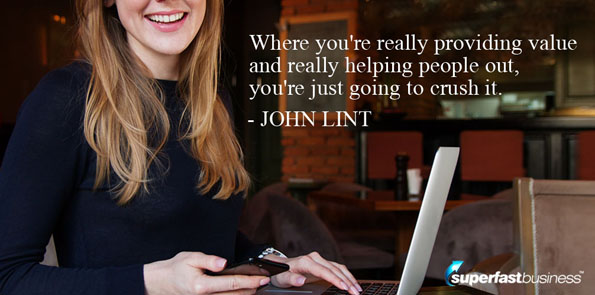 There are many, many things that you can do, but I hope I explained a bit, like, the power of this. Now you can really customize any funnel from now to whenever, customize the content of the pages on the fly based on their preferences. So when you combine those two boosters, those two power weapons, the quiz on the front, building a list, and then dynamic audience, and if you do something like a challenge as a backend strategy, where you’re really providing value and and really helping people out, you’re just going to crush it, because you’re maximizing your conversions like crazy. You know who they are, you know exactly what they like, you have that position of authority, expert status, people love you because for five days you’ve been live and you’ve been helping them out. They have social proof because you have that community going into the challenge. So it’s an amazing formula and an amazing recipe for you, just crushing it with your offers. Because at the end, you don’t have to sell. You don’t have to do some crazy sales letter or hire a $20,000 copywriter to write your crazy sales page or sales video. You just tell them. And that’s what I love about your stuff, James, it’s all about hey, you want to go to the next step? This is what I have. This is what it will do for you. This is how it works. Click the button below and get access. And that’s a powerful thing.
There are many, many things that you can do, but I hope I explained a bit, like, the power of this. Now you can really customize any funnel from now to whenever, customize the content of the pages on the fly based on their preferences. So when you combine those two boosters, those two power weapons, the quiz on the front, building a list, and then dynamic audience, and if you do something like a challenge as a backend strategy, where you’re really providing value and and really helping people out, you’re just going to crush it, because you’re maximizing your conversions like crazy. You know who they are, you know exactly what they like, you have that position of authority, expert status, people love you because for five days you’ve been live and you’ve been helping them out. They have social proof because you have that community going into the challenge. So it’s an amazing formula and an amazing recipe for you, just crushing it with your offers. Because at the end, you don’t have to sell. You don’t have to do some crazy sales letter or hire a $20,000 copywriter to write your crazy sales page or sales video. You just tell them. And that’s what I love about your stuff, James, it’s all about hey, you want to go to the next step? This is what I have. This is what it will do for you. This is how it works. Click the button below and get access. And that’s a powerful thing.
Not worrying about the sale
James: Yeah, I mean, look, I probably miss a few sales by not having a stereotypically driven sales page. However, the communications that I have before my sales process, especially the content – this podcast, I mean, we’re broadcasting this for free. Like you said, Don’t worry about trying to make the sale all the time. I’m happy to educate 5000, 6000 people, whoever listens to this episode, for free. And some of those people will resonate with the message, and it will be the right time for them to join SuperFastBusiness membership. And when they do, they may not get dazzled and wooed and contorted by my sales page to join immediately. But the thing that happens after that is, I will send some emails if they visit the page, and see if I can find out more about them and discover if there will be a solution. And for some people, it’s going to be perfect. And other people, not yet. And that’s cool. It’s a long game. I’ve been at this for, gosh, 14 years, and I’m in no hurry. I think I’ve got some juice left in the tank.
I’ve watched a lot of people come and go over the years, and they get caught up in fads and hypes and stuff. And it can be very confusing. I mean, there is a special tool for this and a special tool for that. And I had to go out and glue together different tools to create the delivery system that I have. In many ways, I think it’d be much easier if you just started today and fired up your account with KLEQ, point it to a domain, and then just get creating that homepage, and then start adding your boosters, I think that’s what you call them. That will do the same things that all those bolt-on extra tools do.
“It’s probably easier to come to the game now than it was a decade ago.”
I think I recall seeing a comparison chart somewhere where you added up the cost of all the things… I mean, just to give you an example, John, I spend about $1,000 a month just on hosting for my website. A thousand bucks a month. That’s just for my site to be sitting in Amazon. And that’s because I want it to be up. I want it to be fast. That’s before you take into account other costs. So your tool is fully hosted, and it’s got all the bits and pieces included. And you know, it’s not even as much as I spend on hosting. So it’s probably easier to come to the game now than it was a decade ago.
John: Oh yeah. Way easier.
James: You get stuck with legacy things. I mean, now I’ve got 160,000 posts to think about. So it’s not easy if you get entrenched into something and you don’t want to be there forever. And that’s why the thing I like about you is, you want to be around for a long time. And you’re taking it at a nice pace, and you care about your customers. And that’s why I’m happy to do this series and I want to see you be successful. I do have a dog in the fight, you know? I’m motivated for you to be very successful, but to do that by creating value for customers.
The simplest way to make it work
What else can you say about the challenge process in relation to the software? And now we’ve kind of given a good overview that you get to have it on your own platform, that you can make it as advanced or as simple as you want. Just on that simple phase, what would be the simplest way to make a challenge work? It’s open an account, register your domain, to mask it to your own domain, create the offer page, integrate your CRM?
John: Yeah, exactly. You basically integrate your CRM.
James: And then you have the delivery page.
John: Yeah. And the delivery page will be, obviously, your challenge page. And that’s like, you know, your private course page, if you like. And in that page it can be as simple as one page, have a video on top, and then each day you can add what we call in KLEQ…
James: But my client who just did it had no content created. She put up the offer page…
John: Yeah, that is what’s important.
James: …and a cart, because we charged for this one, it was only $10, and added the autoresponder. And then she created it each day, as you said, so what do you call that in KLEQ, the page?
John: Yeah, basically, in KLEQ we have the members area. And in there, you can create as many courses as you like. Now, the word “course” is really up to you, it can just be as simple as one page. So just one page that is protected, people need to login, and then it’s up to you.
James: And I would keep it very simple too, because if you don’t, you find people they want more time, or they can’t get through the challenge quickly enough.
John: Yeah, you don’t want to have too many links and too many, like a crazy navigation. Just keep it simple, like one page. And then each day, you just add what we call a lesson block, which is basically like, imagine if you click on it, and it expands, and you have the video and you can have like the different comments, things like that. Just keep it simple, one page. And like you said, on the front end is just basically a page that describes what the challenge is and why it’s awesome. And maybe it’s free, or maybe it’s 10 bucks. Like in your case, when they click on the button they can go to, let’s imagine we’re selling the access to that challenge. $10 or $7, whatever you want. Well, so you have a page that describes the challenge. Very simple page.
Click a button, go to another page called the order page. Now the cool thing is that we have a built-in shopping cart, with KLEQ.com. But not just a gimmicky shopping cart. Okay? This is a full-on shopping cart that you will pay 200 bucks just for that. We kind of mentioned that in the previous episodes where you can do, like, single payments, payment plans, hybrid subscriptions, promo codes, order bumps, one click upsells, one click downsells, invoicing, private member’s area so we can check their purchases. I mean, we’re talking about everything built in – reporting, all of that stuff, right? Bottom line, order page, built-in shopping cart that you can simply add PayPal and Stripe, boom, you’re accepting payments.
After that, simple thank you page. Thank you, order confirmed, you’re going to get your login details. The system takes care of all of that, sends them their login details, they click, they log in, when they log in, that one page challenge that we talked about, the challenge page, done. And then it’s up to you to add content whenever you’re ready. Whenever you release, boom, you go there and then you can do the different things that you want to do.
James: Perfect. Well, that’s basically it. That’s how you set up a challenge technically. That’s the challenge funnel software that you can use. It’s all there. And hey, if you want to go build out an amazing plethora of courses or one-size-fits-all membership for your market, then you can basically have separate levels and you can handle all of this under one account, right?
John: Yeah, yeah, you can have bundles…
James: Different access privileges.
John: Yeah. Different access and all that stuff. Yeah, exactly.
James: John, you’re a beast. What can I say? You’re so clever.
John: Thank you.
James: And I mean, it’s kind of hard. I know we got so much we could talk about around this, but we have to try and keep it relatable. You could get overwhelmed about this, but I guess what I’m saying is, there’s one solution that is going to solve most problems for most of the people that I’m talking to, and that’s why I keep having you back. Hope to speak to you on a future episode, and keep talking about topics relating to membership. Thank you so much.
That’s John Lint.
John: Thank you for having me.
James: KLEQ.com. A fellow surfer, a software and marketing-savvy entrepreneur. Take care.
Leverage the wealth of marketing resources inside JamesSchramko membership
Discover the power of KLEQ.com software which includes quiz funnel features
Liked the episode? Leave us a review on iTunes
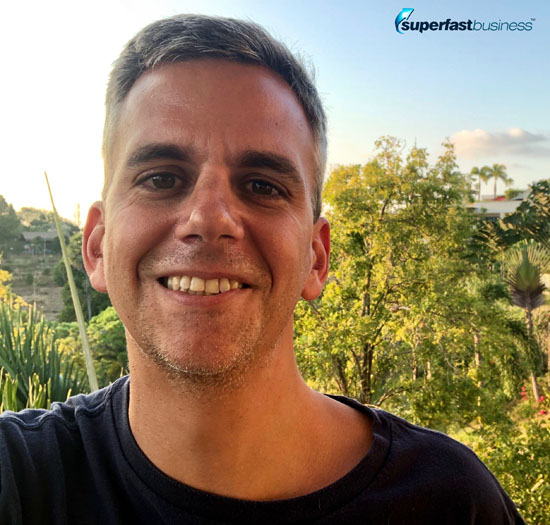
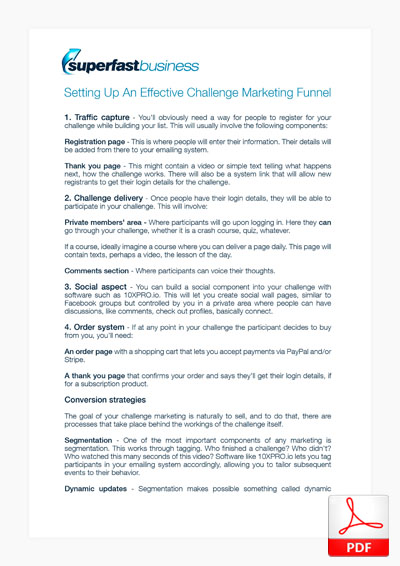
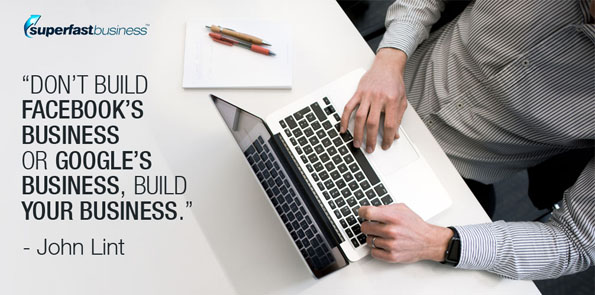

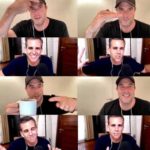
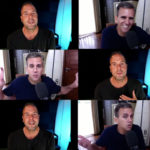
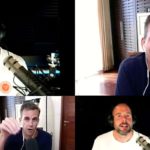





Leave a Reply